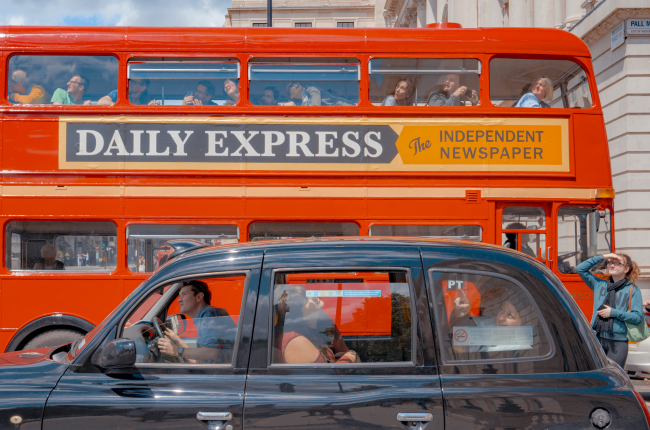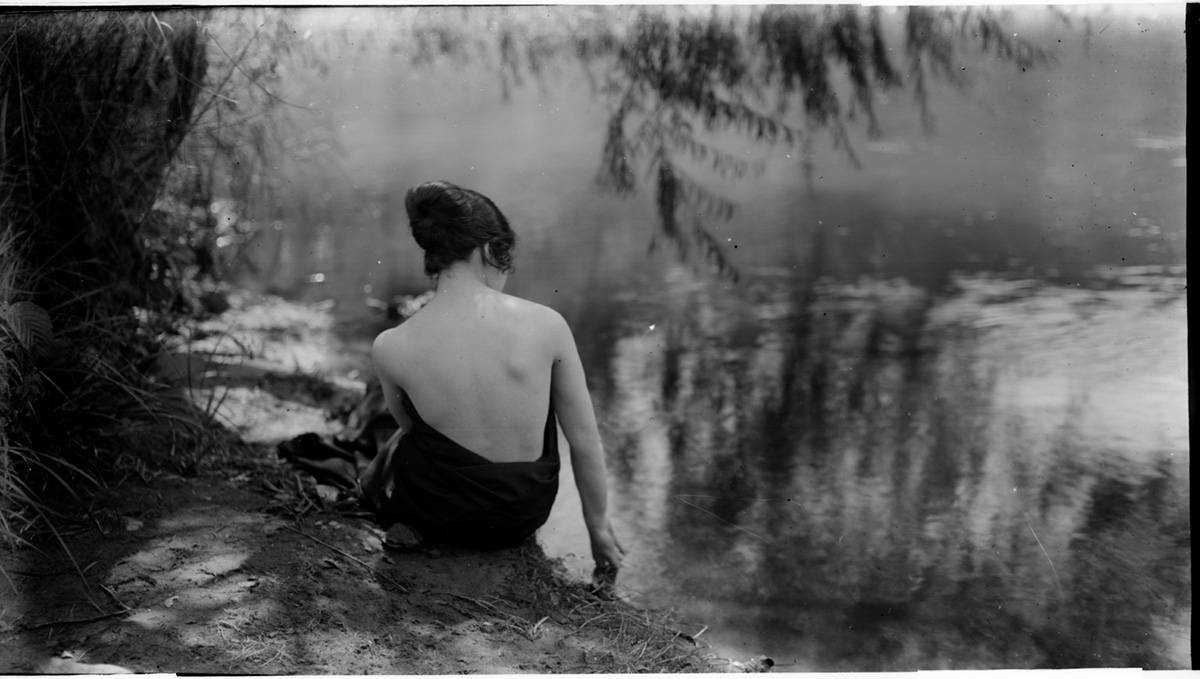
Ecuador
He is one of Ecuador’s greatest photographers. Yet until recently, there had been no attempt to resurrect his images, mainly because conservative society would have preferred his work to drop into oblivion. Emmanuel Honorato Vázquez came from a wealthy family but was a rebellious, anticlerical iconoclast, a bohemian and an epicurean. He was a resolutely modern writer and photographer who died too young, having unknowingly left his mark on the history of his country. Backed by the municipal council of Quito, archivist Patricio Tipan Lucero worked relentlessly to publish a book of his images in 2018. “The greatest quality of Honorato’s work is undoubtedly the depth of his portraits, his ability to envision the lives of his models,” writes Pablo Corral Vega, another Ecuadorian photographer on show at the La Gacilly Photo Festival. This will be the first opportunity in Europe to discover the creative force of this great artist, expressed at a time when Latin America was slowly awakening to the maelstrom of modernity. He shows us a stratified, complex and profoundly unequal society that is nonetheless rich in traditions, customs and ritual celebrations, some of which have not stood the test of time.
The forgotten photographer of the 1920s.
Ecuador / 1893-1924He is one of Ecuador’s greatest photographers. Yet until recently, there had been no attempt to resurrect his images, mainly because conservative society would have preferred his work to drop into oblivion. Emmanuel Honorato Vázquez came from a wealthy family but was a rebellious, anticlerical iconoclast, a bohemian and an epicurean. He was a resolutely modern writer and photographer who died too young, having unknowingly left his mark on the history of his country. Backed by the municipal council of Quito, archivist Patricio Tipan Lucero worked relentlessly to publish a book of his images in 2018. “The greatest quality of Honorato’s work is undoubtedly the depth of his portraits, his ability to envision the lives of his models,” writes Pablo Corral Vega, another Ecuadorian photographer on show at the La Gacilly Photo Festival. This will be the first opportunity in Europe to discover the creative force of this great artist, expressed at a time when Latin America was slowly awakening to the maelstrom of modernity. He shows us a stratified, complex and profoundly unequal society that is nonetheless rich in traditions, customs and ritual celebrations, some of which have not stood the test of time.
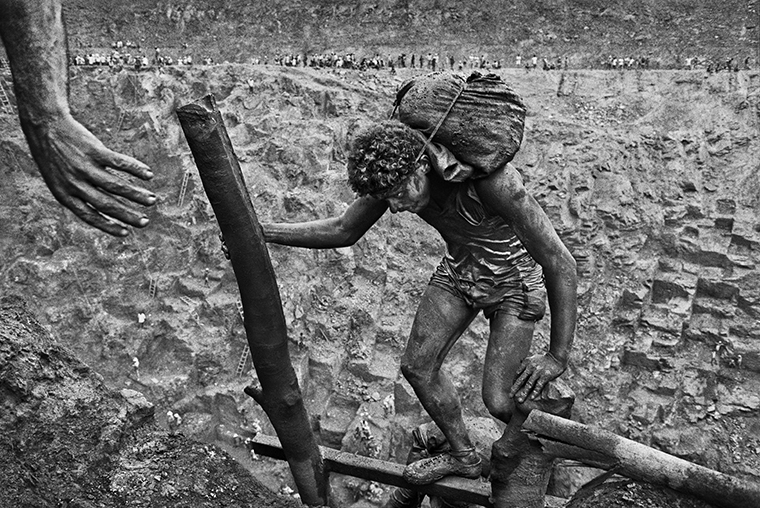
Brazil
Gold
“The first time I saw the Serra Pelada mine, I was speechless. There was this huge pit before me, almost two hundred metres in diameter and just as deep, swarming with tens of thousands of barely clothed men, half of them carrying heavy bags of earth on rickety wooden ladders, the other half hurtling down muddy slopes towards the abyss. They were looking for gold.” Sebastião Salgado first discovered this Dantean scene in September 1986. At the time, the Brazilian photographer was working on The Hand of Man, a vast perspective depicting the end of the industrial revolution that took him from the steel mills of the Soviet Union to the plantations of Reunion Island. Other than the harsh living conditions endured by labourers and farm workers, he sought to highlight the nobility of men at work. He spent 35 days at the open-pit mine, where conditions were atrocious and accidents a daily occurrence. The result is a frighteningly beautiful array of images depicting lines of human ants scouring the earth for a vein of gold, clusters of bodies and matter, and the demented gazes of wretched souls, barefoot in streams of filth and mercury. Over 30 years later, Salgado returned to this work in 2019 to publish a sumptuous book soberly entitled Gold. This exhibition will give the wider public a chance to see some of the haunting, hypnotic images of this now-closed inferno.
Gold
Brazil - Born in 1944Gold
“The first time I saw the Serra Pelada mine, I was speechless. There was this huge pit before me, almost two hundred metres in diameter and just as deep, swarming with tens of thousands of barely clothed men, half of them carrying heavy bags of earth on rickety wooden ladders, the other half hurtling down muddy slopes towards the abyss. They were looking for gold.” Sebastião Salgado first discovered this Dantean scene in September 1986. At the time, the Brazilian photographer was working on The Hand of Man, a vast perspective depicting the end of the industrial revolution that took him from the steel mills of the Soviet Union to the plantations of Reunion Island. Other than the harsh living conditions endured by labourers and farm workers, he sought to highlight the nobility of men at work. He spent 35 days at the open-pit mine, where conditions were atrocious and accidents a daily occurrence. The result is a frighteningly beautiful array of images depicting lines of human ants scouring the earth for a vein of gold, clusters of bodies and matter, and the demented gazes of wretched souls, barefoot in streams of filth and mercury. Over 30 years later, Salgado returned to this work in 2019 to publish a sumptuous book soberly entitled Gold. This exhibition will give the wider public a chance to see some of the haunting, hypnotic images of this now-closed inferno.
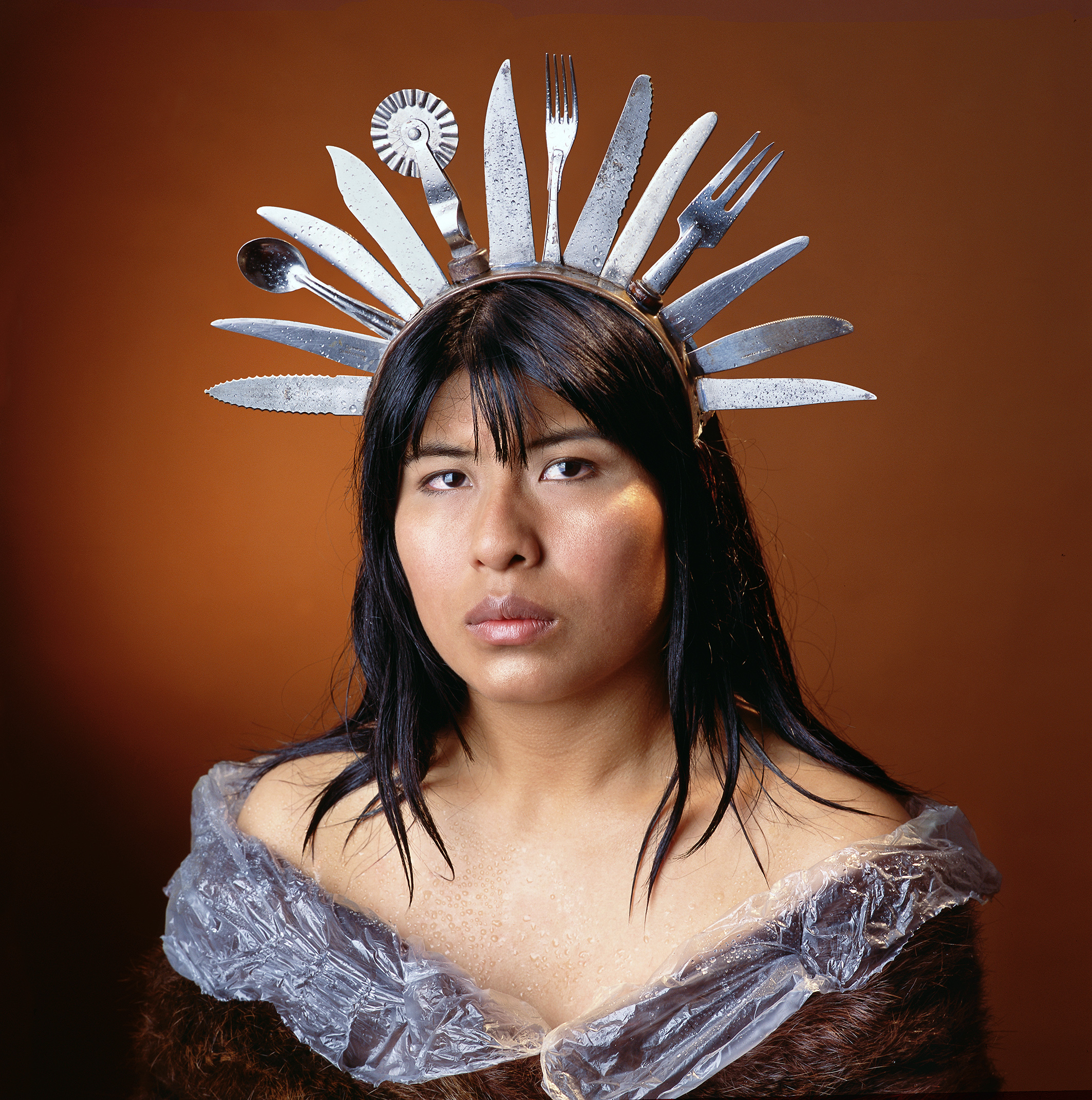
Argentina
The colours are clearly reminiscent of Martin Parr, the humour of Peter Dench, and the images of Andy Warhol. Marcos López, a leading name in Argentinian photography, took up this profession after the 1978 World Cup, where he had met a host of photographers covering the event. Renowned for his Pop Latino series, his photographs are composed like paintings where pop culture, American culture and Latin American clichés (in all senses of the term!) collide. Far-removed from his first black-and-white photographs published in a book in 1993, here he depicts his inventive and surrealist conception of the world around him, creating an amused yet scathing critique of our consumer society and modern times. “I like to exaggerate,” insists López, who is both provocative and observant. He deliberately mixes the profane and the sacred to offer his own kitsch and caustic take on the great religious paintings dear to South American society, where devotion reigns supreme.
Pop Latino
Argentina - Born in 1958The colours are clearly reminiscent of Martin Parr, the humour of Peter Dench, and the images of Andy Warhol. Marcos López, a leading name in Argentinian photography, took up this profession after the 1978 World Cup, where he had met a host of photographers covering the event. Renowned for his Pop Latino series, his photographs are composed like paintings where pop culture, American culture and Latin American clichés (in all senses of the term!) collide. Far-removed from his first black-and-white photographs published in a book in 1993, here he depicts his inventive and surrealist conception of the world around him, creating an amused yet scathing critique of our consumer society and modern times. “I like to exaggerate,” insists López, who is both provocative and observant. He deliberately mixes the profane and the sacred to offer his own kitsch and caustic take on the great religious paintings dear to South American society, where devotion reigns supreme.
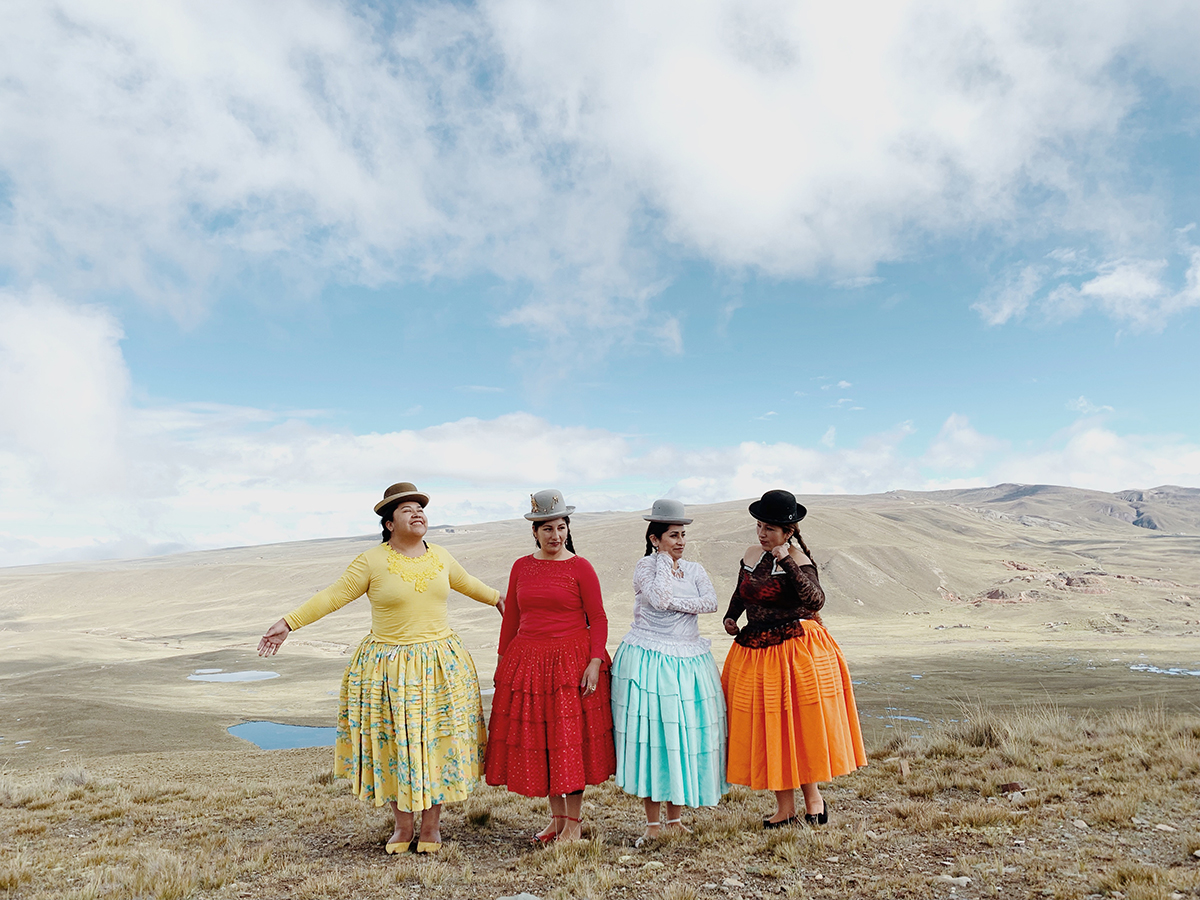
Brazil
Young Brazilian photographer Luisa Dörr won a World Press Photo award in 2019 and has gained recognition for her masterful portraiture and use of colour in recent years. This exhibition is mainly made up of two different series. The first explores the world of the Flying Cholitas, the Bolivian women who adopt the very masculine codes of wrestling to empower women in their community. The photographer then takes us to Spain with her Falleras series captured during the Valencia Fallas, for which women prepare their dresses and costumes all year round, ready to take to the streets lined with giant papier-mâché sculptures. In these two stories, traditions clash with or embrace modernity. Luisa Dörr belongs to the young generation of photographers who are putting women centre stage, creating countless portraits of her contemporaries, exploring the depths of the favellas or depicting the lifestyles of the bourgeoise, capturing the dignity of her subjects and their condition in each shot.
Mulheres
Brazil - Born in 1988Young Brazilian photographer Luisa Dörr won a World Press Photo award in 2019 and has gained recognition for her masterful portraiture and use of colour in recent years. This exhibition is mainly made up of two different series. The first explores the world of the Flying Cholitas, the Bolivian women who adopt the very masculine codes of wrestling to empower women in their community. The photographer then takes us to Spain with her Falleras series captured during the Valencia Fallas, for which women prepare their dresses and costumes all year round, ready to take to the streets lined with giant papier-mâché sculptures. In these two stories, traditions clash with or embrace modernity. Luisa Dörr belongs to the young generation of photographers who are putting women centre stage, creating countless portraits of her contemporaries, exploring the depths of the favellas or depicting the lifestyles of the bourgeoise, capturing the dignity of her subjects and their condition in each shot.
Brazil
This Brazilian photographer creates some dizzying images. Fortunately, however, most of them are not real! Take, for example, the startling picture of an imaginary runway where 250 planes form an impossible maze of fuselages that appears to hint at a nightmarish future. It took 800 hours of work to produce this photograph. Its creator is fascinated by the dizzying numbers that seem to define our ultra-modern world, and he strives to illustrate them. Another startling image in the same Collectives series features an astounding 50,000 cars in a row… yet this represents just a tiny percentage of the 5 million vehicles currently in circulation in São Paulo, the artist’s home town. Vasconcellos is an aerial photography aficionado who loves to explore our excessively industrial universe, switching approaches and styles as he does so. For example, his series A Picturesque Voyage Through Brazil is in marked contrast to his apocalyptic vision of a world dominated by machines. This monochrome collection depicts the virgin forest of Brazil and pays tribute to his great-great-grandfather, a 19th-century botanist who accompanied German explorer Ludwig Riedel on his expeditions. The images are inspired by the engravings produced in the 1820s by French archaeologist and scientist Charles Othon Frédéric Jean-Baptiste, Comte de Clarac, and plunge us into a natural world from another era, as if to further highlight the extinction that is currently under way.
Beyond Reality
Brazil - Born in 1965This Brazilian photographer creates some dizzying images. Fortunately, however, most of them are not real! Take, for example, the startling picture of an imaginary runway where 250 planes form an impossible maze of fuselages that appears to hint at a nightmarish future. It took 800 hours of work to produce this photograph. Its creator is fascinated by the dizzying numbers that seem to define our ultra-modern world, and he strives to illustrate them. Another startling image in the same Collectives series features an astounding 50,000 cars in a row… yet this represents just a tiny percentage of the 5 million vehicles currently in circulation in São Paulo, the artist’s home town. Vasconcellos is an aerial photography aficionado who loves to explore our excessively industrial universe, switching approaches and styles as he does so. For example, his series A Picturesque Voyage Through Brazil is in marked contrast to his apocalyptic vision of a world dominated by machines. This monochrome collection depicts the virgin forest of Brazil and pays tribute to his great-great-grandfather, a 19th-century botanist who accompanied German explorer Ludwig Riedel on his expeditions. The images are inspired by the engravings produced in the 1820s by French archaeologist and scientist Charles Othon Frédéric Jean-Baptiste, Comte de Clarac, and plunge us into a natural world from another era, as if to further highlight the extinction that is currently under way.
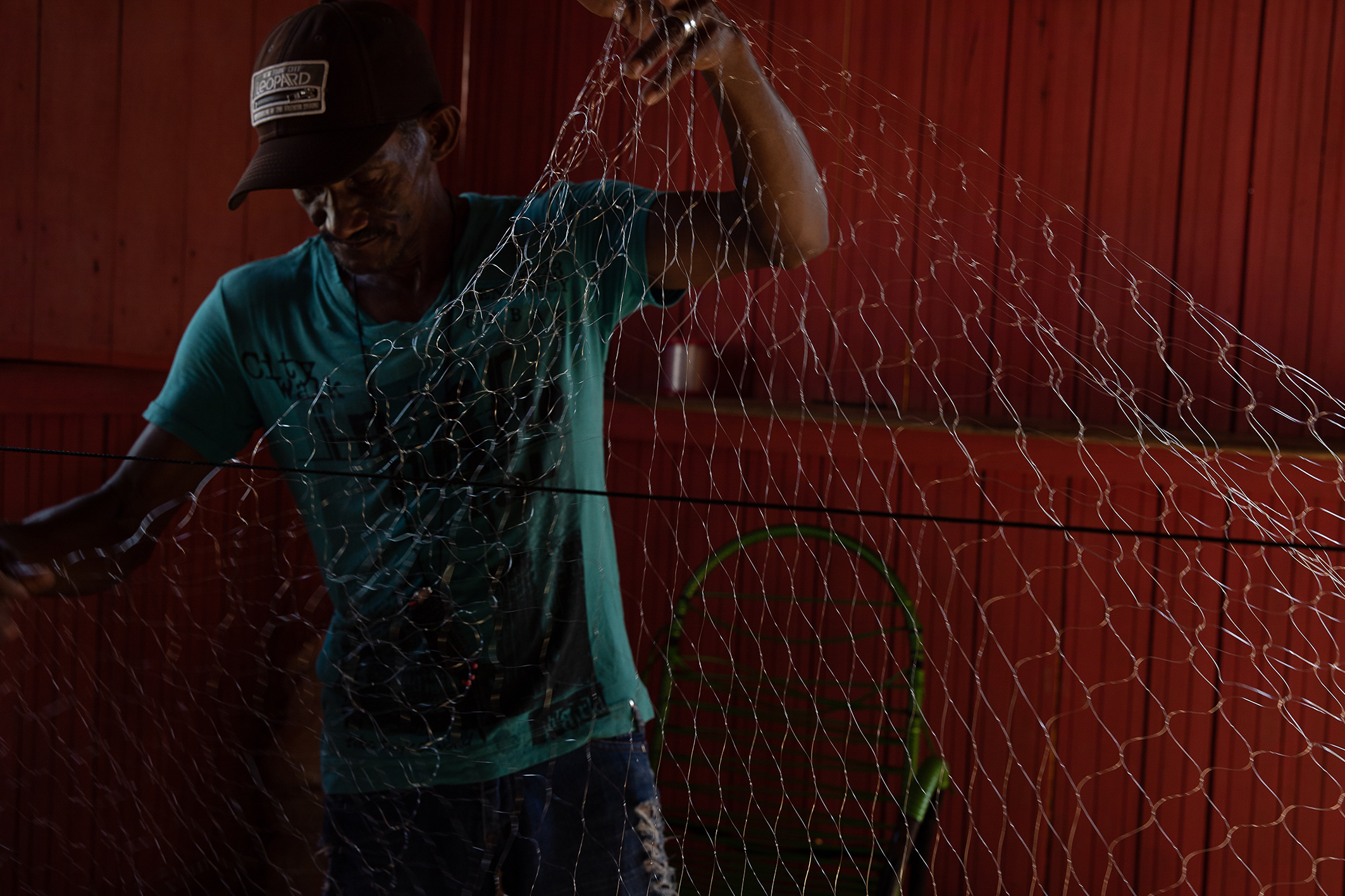
Brazil
Last summer’s images of the Amazon ravaged by huge fires made headlines around the world and moved us all for many weeks. It was impossible for photojournalist Carolina Arantes, who was born in Brazil but resides in France, to remain indifferent to the drama that was unfolding in her home country. She thus chose to spend several weeks in Altamira in the state of Parà, where the fires blazed the longest and where the Amazon rainforest is suffering for its much-coveted riches. In recent years, large corporations and powerful farmers have been monopolising these resources with no regard for the environment or indigenous communities. Bolsonaro’s election as president has only worsened the situation: in Brazil; deforestation has doubled in a single year, devastating 10,000 km² of land. Altamira is a city of unbridled excess, a kind of modern-day Wild West that has been attracting explorers since the huge Belo Monte dam was built, ravaging 50,000 hectares of primary forest in its wake. Carolina Arantes depicts the sombre spectacle of a sacrificed paradise. Her candid images give us a close-up view of the trees damaged by flames, the gold panners, the farmers desperate for new pastures for their ever-increasing herds of cattle, and of the indigenous Amazon populations robbed of their land.
The Green Gold Rush
Brazil - Born in 1980Last summer’s images of the Amazon ravaged by huge fires made headlines around the world and moved us all for many weeks. It was impossible for photojournalist Carolina Arantes, who was born in Brazil but resides in France, to remain indifferent to the drama that was unfolding in her home country. She thus chose to spend several weeks in Altamira in the state of Parà, where the fires blazed the longest and where the Amazon rainforest is suffering for its much-coveted riches. In recent years, large corporations and powerful farmers have been monopolising these resources with no regard for the environment or indigenous communities. Bolsonaro’s election as president has only worsened the situation: in Brazil; deforestation has doubled in a single year, devastating 10,000 km² of land. Altamira is a city of unbridled excess, a kind of modern-day Wild West that has been attracting explorers since the huge Belo Monte dam was built, ravaging 50,000 hectares of primary forest in its wake. Carolina Arantes depicts the sombre spectacle of a sacrificed paradise. Her candid images give us a close-up view of the trees damaged by flames, the gold panners, the farmers desperate for new pastures for their ever-increasing herds of cattle, and of the indigenous Amazon populations robbed of their land.
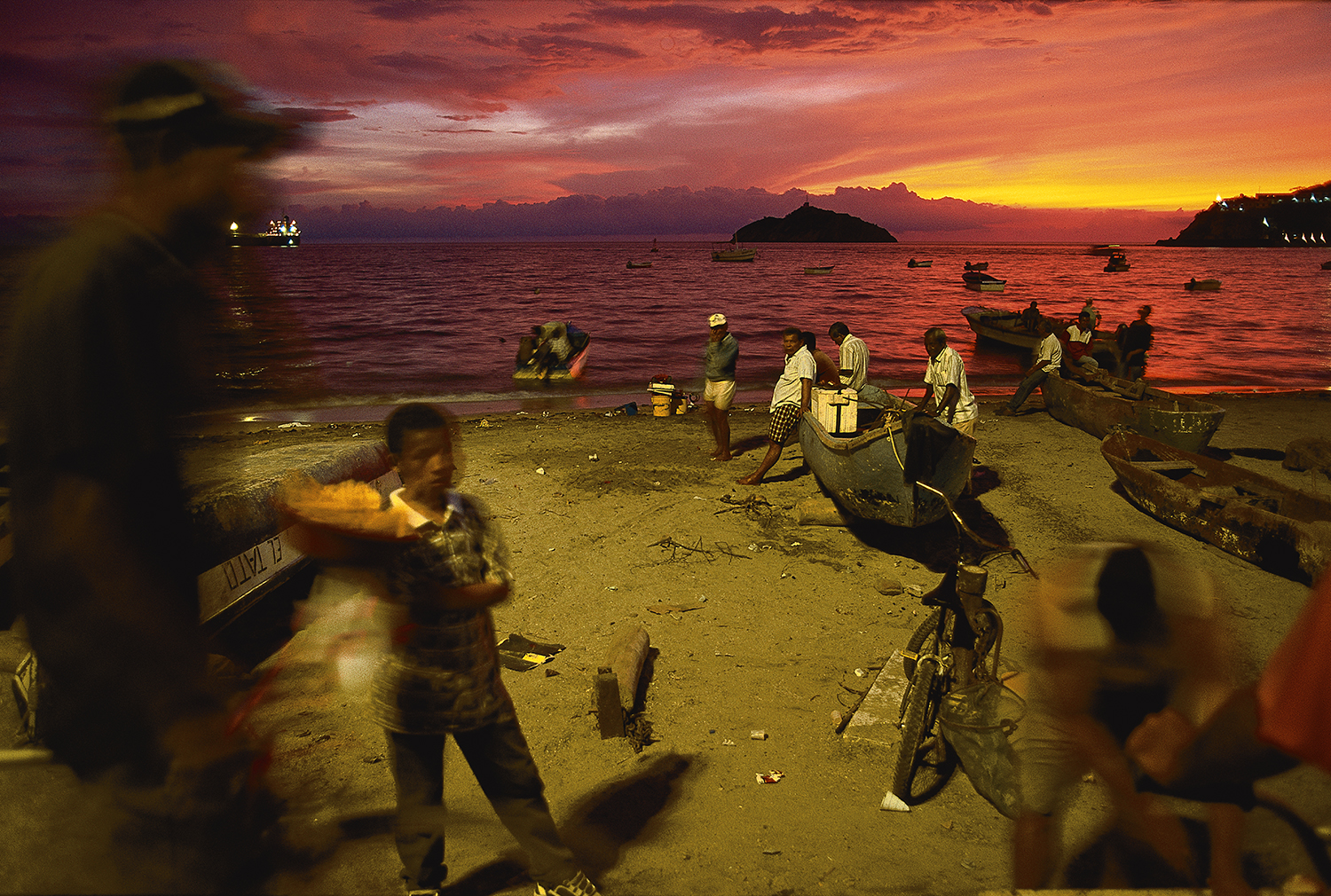
Ecuador
Now accustomed to seeing his pictures published in prestigious American magazine National Geographic, Pablo Corral Vega, a master of colour photography, has never lost sight of the mission he set himself upon entering the profession: “I’ve always wanted to bear witness to the world in all its diversity and beauty. What fits naturally with me is relating culture and daily life, human beings in their simplest and noblest condition.” As a young boy growing up in the Andes, he would go fishing, sometimes with his father and always with his camera. And years later, the Ecuadorian photographer set off to rediscover the Andean Cordillera, which soars skywards over 8,500 kilometres of highlands. Thus, from Patagonia to the Caribbean, the jagged spine of South America connects countries and cultures. Written by Literary Nobel Prize winner Mario Vargas Llosa, the captions accompanying the photographs in the exhibition are not factual descriptions. They are works of fiction, created by a mind inspired by the arresting images he has seen: “These photographs show people weighed down by centuries of oppression, people who have been exploited then forgotten, people condemned to live in appalling conditions with a constant awareness of death. And yet, despite it all, nothing has dampened their zest for life.”
The Hymn of the Andes
Ecuador - Born in 1966Now accustomed to seeing his pictures published in prestigious American magazine National Geographic, Pablo Corral Vega, a master of colour photography, has never lost sight of the mission he set himself upon entering the profession: “I’ve always wanted to bear witness to the world in all its diversity and beauty. What fits naturally with me is relating culture and daily life, human beings in their simplest and noblest condition.” As a young boy growing up in the Andes, he would go fishing, sometimes with his father and always with his camera. And years later, the Ecuadorian photographer set off to rediscover the Andean Cordillera, which soars skywards over 8,500 kilometres of highlands. Thus, from Patagonia to the Caribbean, the jagged spine of South America connects countries and cultures. Written by Literary Nobel Prize winner Mario Vargas Llosa, the captions accompanying the photographs in the exhibition are not factual descriptions. They are works of fiction, created by a mind inspired by the arresting images he has seen: “These photographs show people weighed down by centuries of oppression, people who have been exploited then forgotten, people condemned to live in appalling conditions with a constant awareness of death. And yet, despite it all, nothing has dampened their zest for life.”
Chile
Taming the untameable at the edge of Patagonia is an adventure worthy of a novel. Photographer Tomás Munita did just that when he embarked with a troop of gauchos, or Chilean cowboys, on the trail of the bagualeros, capturing feral cattle in the steppes and mountains of Sutherland in the south of the country. Munita documented the ancestral lifestyle of these families, who are accompanied by around twenty horses and just as many dogs, battling the winds of the plains and the chilly conditions of the Tierra del Fuego. In their attempts to tame these animals, which were once domesticated but have returned to the wild, the gauchos refuse to use any modern means, risking their lives to confront them hand-to-hand. These images seem to come from another era, harking back to a wild world now increasingly stifled by globalisation and large-scale agriculture.
Exhibition printed thanks to the support and expertise of CEWE.
Patagonia's Cowboys
Chile - Born in 1975Taming the untameable at the edge of Patagonia is an adventure worthy of a novel. Photographer Tomás Munita did just that when he embarked with a troop of gauchos, or Chilean cowboys, on the trail of the bagualeros, capturing feral cattle in the steppes and mountains of Sutherland in the south of the country. Munita documented the ancestral lifestyle of these families, who are accompanied by around twenty horses and just as many dogs, battling the winds of the plains and the chilly conditions of the Tierra del Fuego. In their attempts to tame these animals, which were once domesticated but have returned to the wild, the gauchos refuse to use any modern means, risking their lives to confront them hand-to-hand. These images seem to come from another era, harking back to a wild world now increasingly stifled by globalisation and large-scale agriculture.
Exhibition printed thanks to the support and expertise of CEWE.
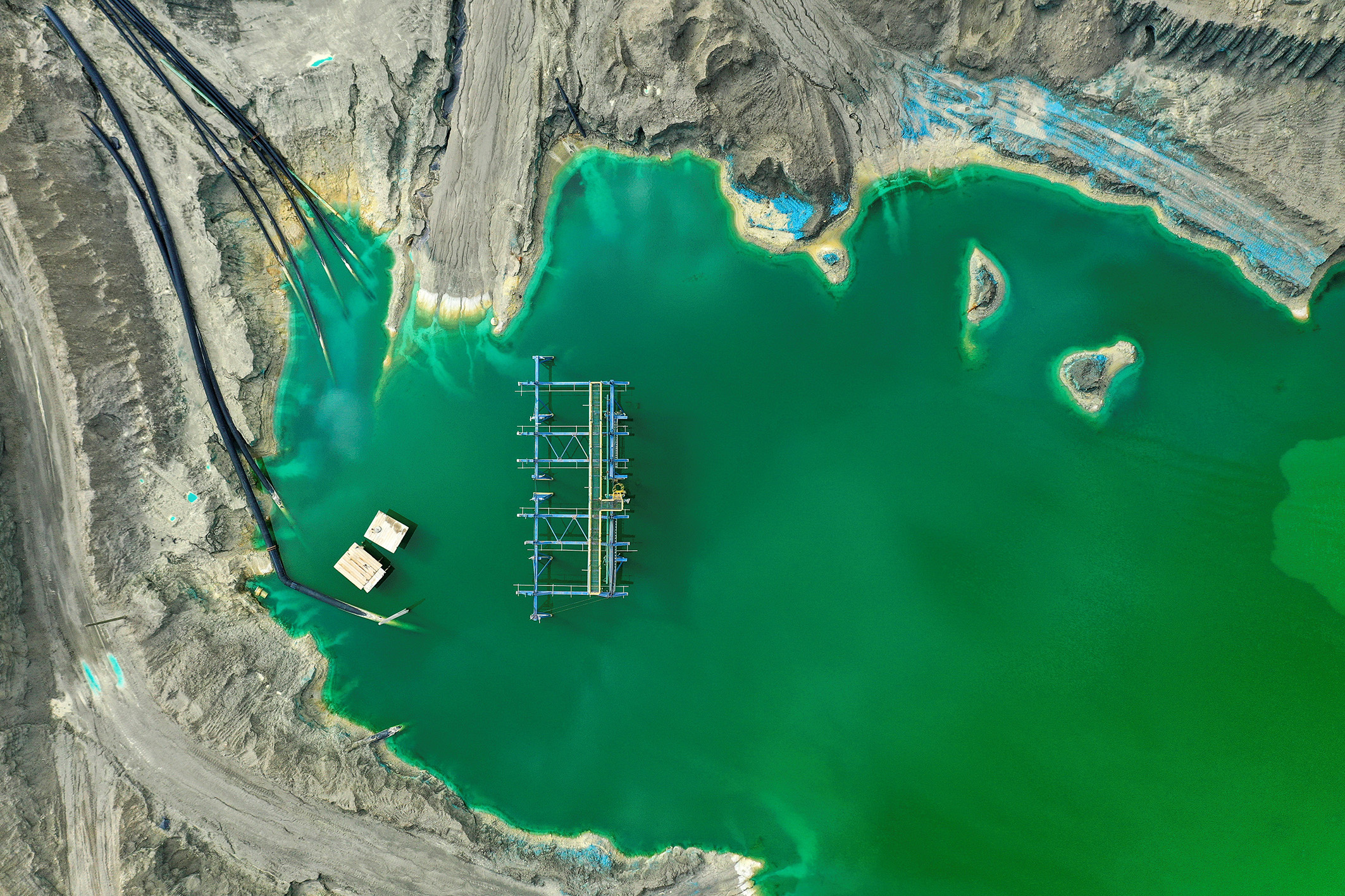
Chile
Seen from the sky, these are small turquoise or emerald lakes glistening in the north of Chile. But upon closer inspection, it transpires that their glow is actually caused by toxic copper waste, a residue from mines that flows into the water. Further away, in the Tarapacá region, the Humberstone saltpetre works lie abandoned, the ghostly remains of the former potassium nitrate processing sector. In 2019, Chile, which has been plagued by a ten-year-long drought, was due to hold the COP 25 climate change conference, but the social crisis and protest movements occurring in the country forced a change of plan. The country now knows that continuing to consume its resources so intensively will result in its own demise. Martin Bernetti is head of the AFP photo department in Santiago. He is drawing up an environmental inventory of a country that is now aware of its natural heritage and committed to becoming the new Eldorado of green energy.
A joint fight for the planet -
For 2020, the La Gacilly Photo Festival and the AFP have come together to spotlight the work of three AFP photographers working in Latin America on a theme that is close to our hearts: the bond between Humans and Earth.
Exhibition produced thanks to the support and expertise of Initial Labo.
Emergency
Chile - Born in 1968Seen from the sky, these are small turquoise or emerald lakes glistening in the north of Chile. But upon closer inspection, it transpires that their glow is actually caused by toxic copper waste, a residue from mines that flows into the water. Further away, in the Tarapacá region, the Humberstone saltpetre works lie abandoned, the ghostly remains of the former potassium nitrate processing sector. In 2019, Chile, which has been plagued by a ten-year-long drought, was due to hold the COP 25 climate change conference, but the social crisis and protest movements occurring in the country forced a change of plan. The country now knows that continuing to consume its resources so intensively will result in its own demise. Martin Bernetti is head of the AFP photo department in Santiago. He is drawing up an environmental inventory of a country that is now aware of its natural heritage and committed to becoming the new Eldorado of green energy.
A joint fight for the planet -
For 2020, the La Gacilly Photo Festival and the AFP have come together to spotlight the work of three AFP photographers working in Latin America on a theme that is close to our hearts: the bond between Humans and Earth.
Exhibition produced thanks to the support and expertise of Initial Labo.
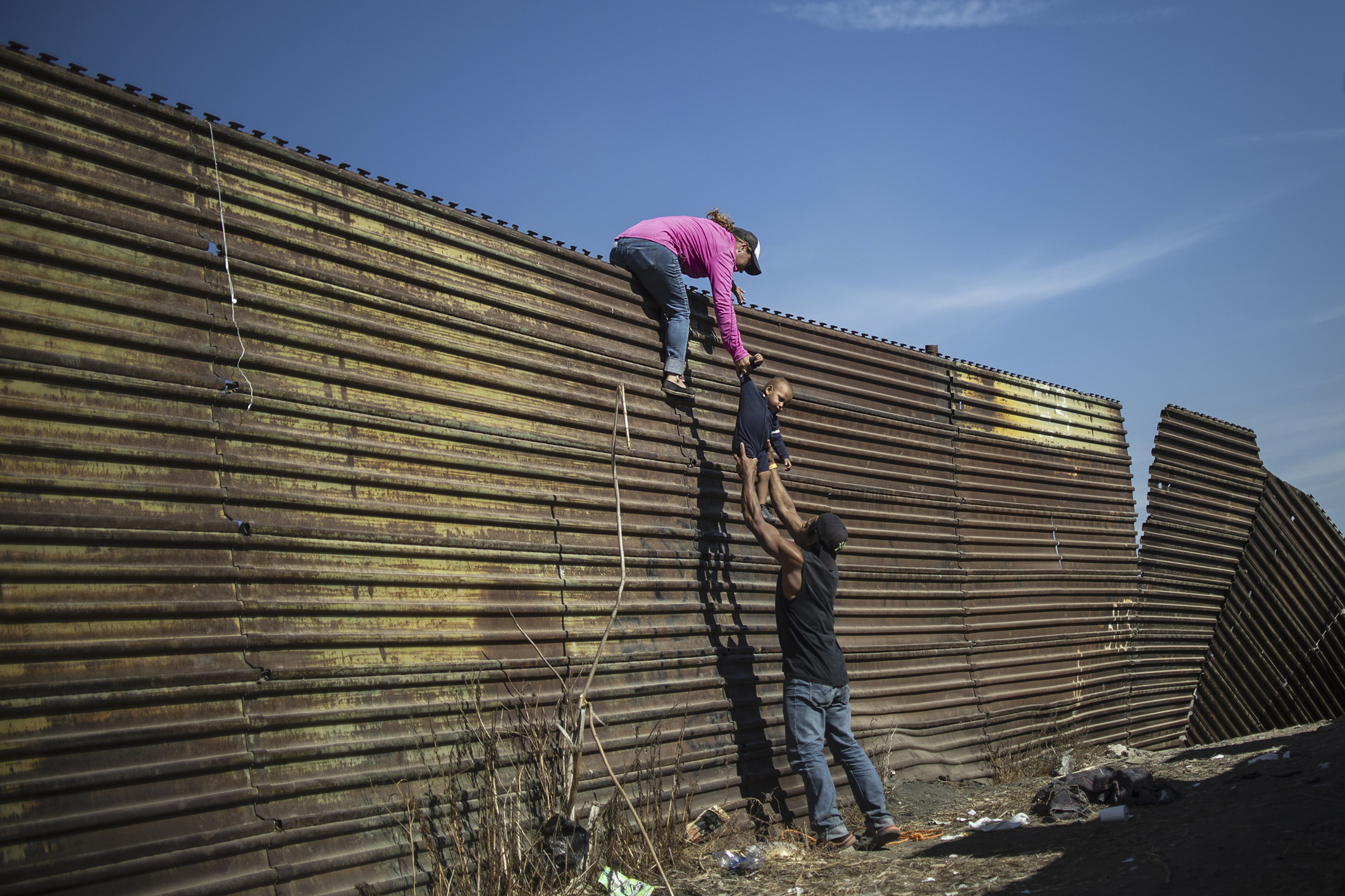
Mexico
Based in Mexico, Pedro Pardo was awarded a World Press Photo prize in 2019 for his shot of a group of Latin American migrants climbing the wall between Mexico and the United States. He continues to document a wounded country that sinks deeper and deeper into violence, every day. His photographs make the front pages and reveal an implacable, heart-rending reality that raises real questions about the world we are fashioning. Children are taking up arms to protect their land, villagers are creating their own self-defence militia against drug cartels, and contingents of destitute people are braving the exodus to seek a brighter future in North America. “I’ve always believed that journalism can transform the community,” states Pardo. This goes some way to explaining what drives him to continue with his work.
A joint fight for the planet -
For 2020, the La Gacilly Photo Festival and the AFP have come together to spotlight the work of three AFP photographers working in Latin America on a theme that is close to our hearts: the bond between Humans and Earth.
Exhibition produced thanks to the support and expertise of Initial Labo.
Dark Horizons
Mexico - Born in 1974Based in Mexico, Pedro Pardo was awarded a World Press Photo prize in 2019 for his shot of a group of Latin American migrants climbing the wall between Mexico and the United States. He continues to document a wounded country that sinks deeper and deeper into violence, every day. His photographs make the front pages and reveal an implacable, heart-rending reality that raises real questions about the world we are fashioning. Children are taking up arms to protect their land, villagers are creating their own self-defence militia against drug cartels, and contingents of destitute people are braving the exodus to seek a brighter future in North America. “I’ve always believed that journalism can transform the community,” states Pardo. This goes some way to explaining what drives him to continue with his work.
A joint fight for the planet -
For 2020, the La Gacilly Photo Festival and the AFP have come together to spotlight the work of three AFP photographers working in Latin America on a theme that is close to our hearts: the bond between Humans and Earth.
Exhibition produced thanks to the support and expertise of Initial Labo.
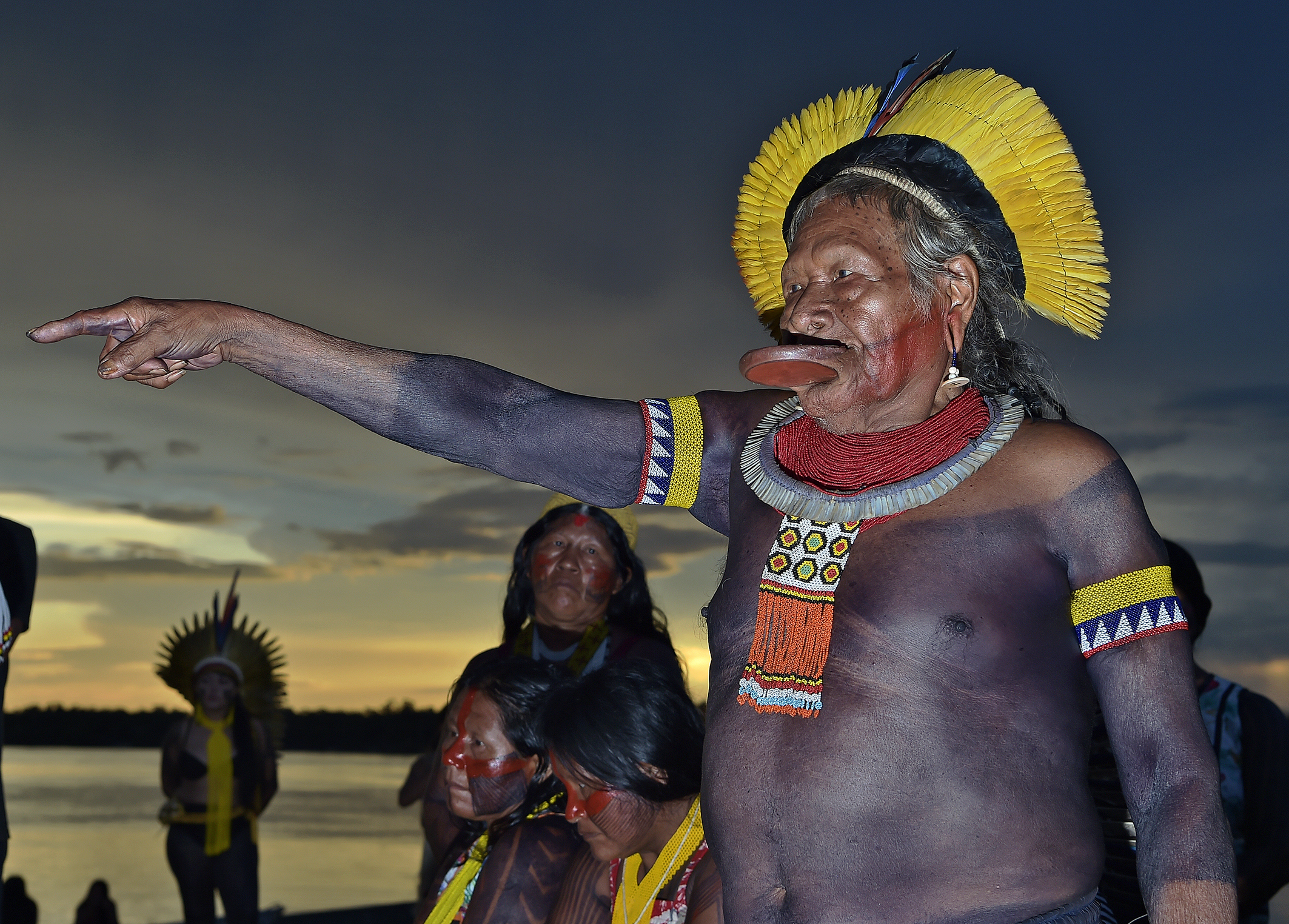
Brazil
In Jair Bolsonaro’s Brazil, the indigenous populations are struggling to make their voices heard to defend their land in the Amazon. This is a mammoth task in a country where native tribes only account for 0.5% of the population (approximately 900,000 inhabitants) and are poorly represented in the circles of power in Brasilia. In an attempt to turn this situation around, nearly 300 native leaders met in January 2020 in the State of Mato Grosso in the heart of the forest: as the world becomes increasingly concerned about ‘the lungs of the planet’, which are plagued by devastating fires, they now know that their survival is on borrowed time. For many months, Carl de Souza, who is based in Rio de Janeiro, followed the revolt of these communities that refuse to give up and die.
A joint fight for the planet -
For 2020, the La Gacilly Photo Festival and the AFP have come together to spotlight the work of three AFP photographers working in Latin America on a theme that is close to our hearts: the bond between Humans and Earth.
Exhibition produced thanks to the support and expertise of Initial Labo.
The revolt of the Indigenous Amazon populations
Brazil - Born in 1980In Jair Bolsonaro’s Brazil, the indigenous populations are struggling to make their voices heard to defend their land in the Amazon. This is a mammoth task in a country where native tribes only account for 0.5% of the population (approximately 900,000 inhabitants) and are poorly represented in the circles of power in Brasilia. In an attempt to turn this situation around, nearly 300 native leaders met in January 2020 in the State of Mato Grosso in the heart of the forest: as the world becomes increasingly concerned about ‘the lungs of the planet’, which are plagued by devastating fires, they now know that their survival is on borrowed time. For many months, Carl de Souza, who is based in Rio de Janeiro, followed the revolt of these communities that refuse to give up and die.
A joint fight for the planet -
For 2020, the La Gacilly Photo Festival and the AFP have come together to spotlight the work of three AFP photographers working in Latin America on a theme that is close to our hearts: the bond between Humans and Earth.
Exhibition produced thanks to the support and expertise of Initial Labo.


